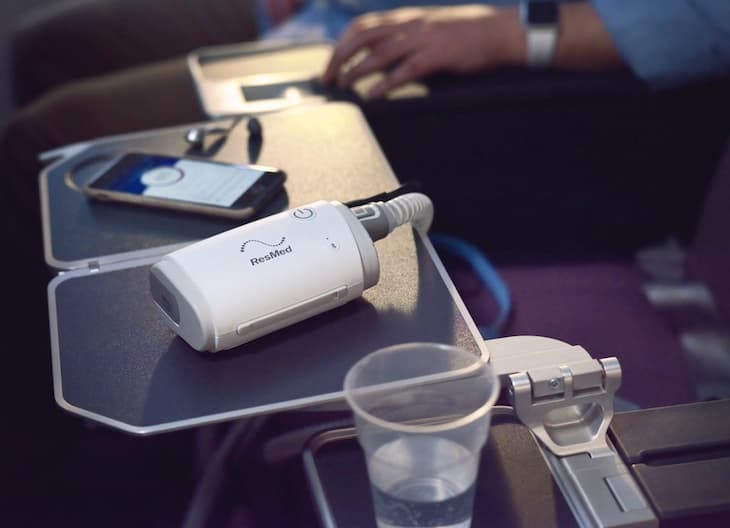04
Nov

When it comes to travel, most of us are happy to leave behind heavy luggage and complicated routines. But for those who rely on CPAP therapy, one thing can’t be left behind: consistent, quality sleep. Sleep apnea doesn’t take a vacation, and neither should your treatment. Yet, the idea of hauling a bulky CPAP machine with its large humidifier chamber, chunky power brick, and heavy tubing is enough to make even the most dedicated traveler hesitate.
Fortunately, there’s a smarter solution for the modern explorer – travel CPAP machines. These compact, travel-ready devices provide the same life-changing benefits of continuous positive airway pressure therapy in a fraction of the size and weight. Whether you’re flying across time zones, camping off the grid, or just taking a weekend road trip, travel CPAPs ensure you rest as deeply as you do at home.

Like all travel gear, choosing the right model involves understanding a few trade-offs. Particularly when it comes to humidification, battery options, and noise levels.
The biggest appeal of compact and portable CPAP machines is their compact design. Most models are about half the size and weight of traditional home units. Some are even comparable to a soda can. This makes them ideal for minimalist travellers who need to pack light but can’t compromise on sleep quality.
These devices typically feature:
The balance between portability and performance is where travel CPAPs shine. They may not offer every luxury feature of full-sized models, but they deliver the essentials. Steady airflow, comfort settings, and reliable pressure adjustment in a highly portable package.
One of the main differences between a home and travel unit is humidification. Full-sized CPAP machines use large heated water chambers that provide consistent moisture, preventing dryness or irritation. Travel CPAPs, on the other hand, rely on more compact and efficient methods.
There are two common solutions:
While neither option fully replicates the lush humidity of a home setup, they’re excellent compromises that keep your airways comfortable while traveling.

Choosing the right portable CPAP device isn’t just about finding the smallest unit, it’s about ensuring that it performs effectively wherever your journey takes you. Here are the most important considerations:
A key feature to look for in a portable CPAP is flexible power compatibility. Many travel units can connect to external lithium-ion battery packs. It’s a must-have for campers, RV travellers, or those flying overnight without access to outlets. Some brands even offer their own dedicated battery kits designed to provide a full night’s use or more. For added convenience, look for models that support USB-C or DC adapters, which can be charged from a car or portable solar system.
A good night’s sleep requires quiet especially in unfamiliar hotel rooms or cabins. While portable CPAP machines tend to be slightly louder than premium home models, advances in motor technology have narrowed the gap considerably.
Comfort features are vital for maintaining consistent therapy. Look for models with:
These settings ensure your travel experience doesn’t come at the expense of comfort or compliance.
Some travel models use proprietary tubing that’s shorter and slimmer. Great for packing, but potentially restrictive if you prefer certain mask styles or third-party accessories. Before purchasing, verify whether your chosen travel CPAP machine for sale supports standard tubing and mask connections. This will make it easier to replace or upgrade parts later.
The beauty of modern travel CPAPs lies in their ability to restore one of the most essential comforts of home restful, uninterrupted sleep. Instead of struggling with jet lag, fatigue, or skipped therapy sessions, you can now bring your treatment with you, wherever you go.
Imagine waking up refreshed on your first morning abroad, fully energized for adventure, rather than groggy and foggy from untreated sleep apnea. That’s the true value of investing in a portable CPAP device. The freedom to travel confidently and comfortably.

When selecting the right travel CPAP, prioritise what matters most for your lifestyle. If you often camp or fly long distances, focus on models with robust battery options. Ultimately, the best travel CPAP is the one that fits seamlessly into your routine providing consistent therapy, reliable performance, and minimal hassle. Before you make the switch, consult your doctor or sleep specialist to confirm the appropriate pressure settings for your new unit. Once that’s set, you’ll be ready to experience what every traveller with sleep apnea deserves: deep, uninterrupted rest anywhere in the world.